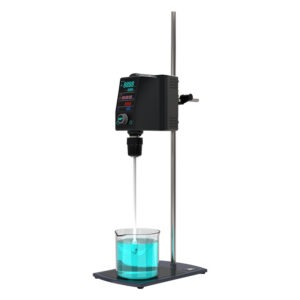
Common Malfunctions of Automatic Lifting Rotary Evaporators and Their Corresponding Solutions
The automatic lifting rotary evaporator is an advanced device used for humidity regulation and cooling in industrial and agricultural sectors. However, during use, various malfunctions may occur. Below are some common issues with automatic lifting rotary evaporators and their corresponding solutions:
- Lifting System Malfunction: If the equipment cannot lift or lower properly, first check whether the power supply is connected correctly. Ensure that the power cable is not damaged or loose, and check if the power switch is turned on. If the power supply is functioning properly, check whether the transmission system of the lifting mechanism is damaged or blocked. Additionally, check if the protective devices on the control panel, such as overload or limit protection, have been triggered.
- Rotary System Malfunction: When issues occur in the rotary system, it may be caused by a failure of the drive mechanism or damage to the transmission components. In this case, stop using the equipment and perform a thorough inspection. If the drive mechanism is faulty, it needs to be repaired or replaced; if the transmission components are damaged, they should also be repaired or replaced.
- Water Pump Malfunction: The water pump is one of the key components. If it does not function properly, it could be due to motor failure, blockages, or water source issues. First, check if the motor is operating normally; if there is a fault, it should be repaired or replaced. Next, clean any debris or dirt from the water pump’s intake and ensure an adequate water supply.
- Control System Malfunction: The control system includes sensors, control panels, and program control devices. If the control system malfunctions, it may prevent the evaporator from operating or regulating humidity properly. Check if the sensors are accurately detecting the environmental humidity and whether the settings on the control panel are correct. If the issue persists, the control device may need to be reprogrammed or replaced.
- Water Leakage Issues: Water leakage can result from aging, damaged, or improperly installed seals. First, check if the seals are intact and replace any that are damaged. Also, inspect the connection points for any cracks or looseness that may require repair or tightening.
In conclusion, it is crucial to detect and resolve malfunctions promptly when using an automatic lifting rotary evaporator. Before installation and maintenance, familiarize yourself with its operational and maintenance requirements and conduct regular inspections and upkeep to ensure its proper functioning. By implementing effective troubleshooting measures, the evaporator will continue to provide efficient humidity regulation and cooling services for the industrial and agricultural sectors.

